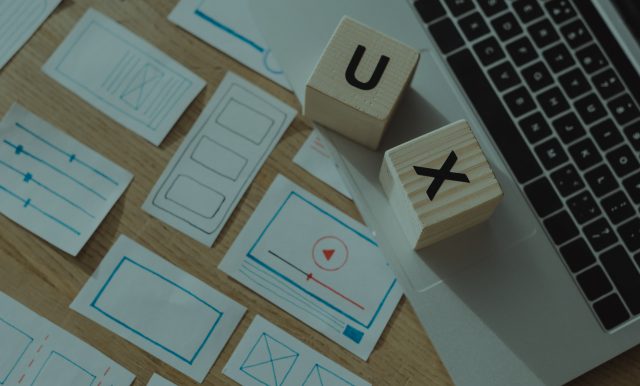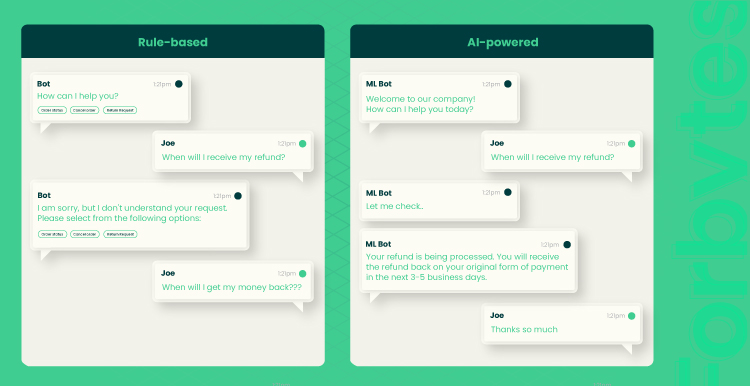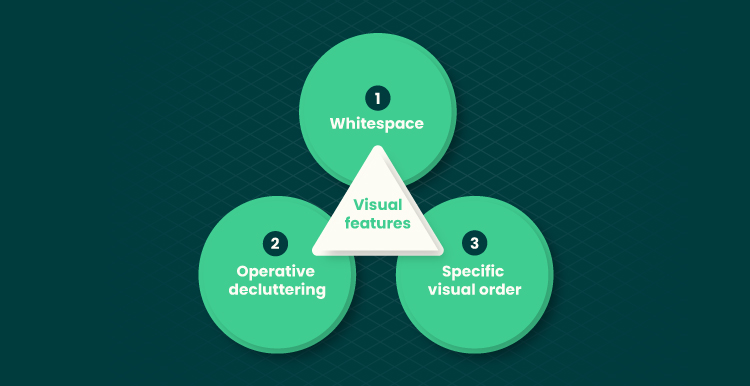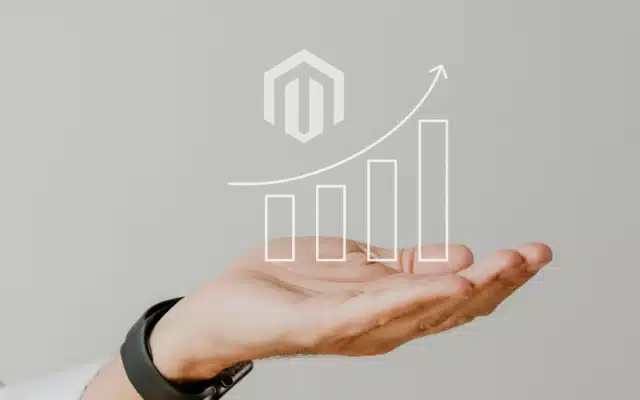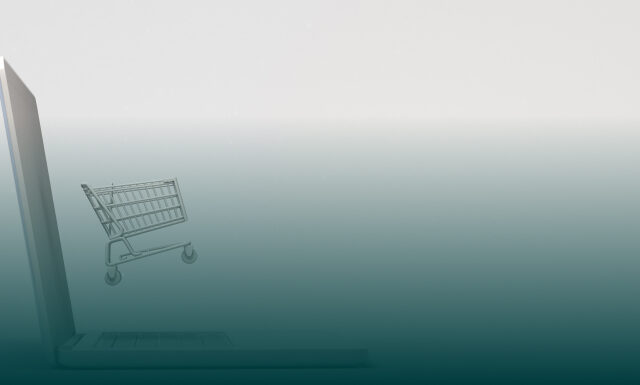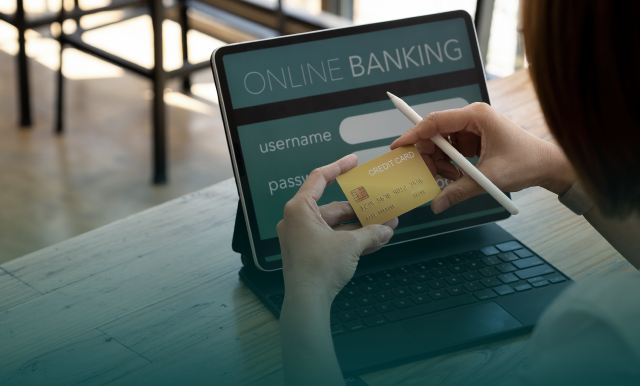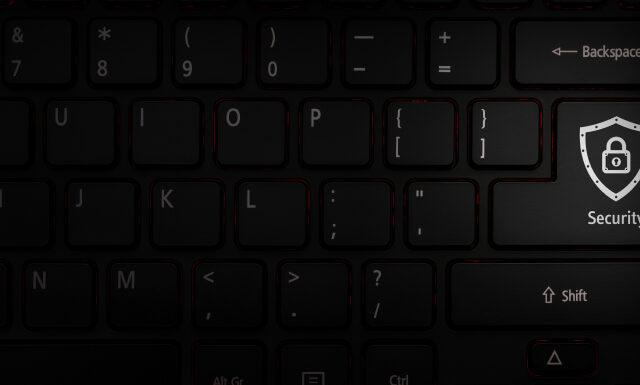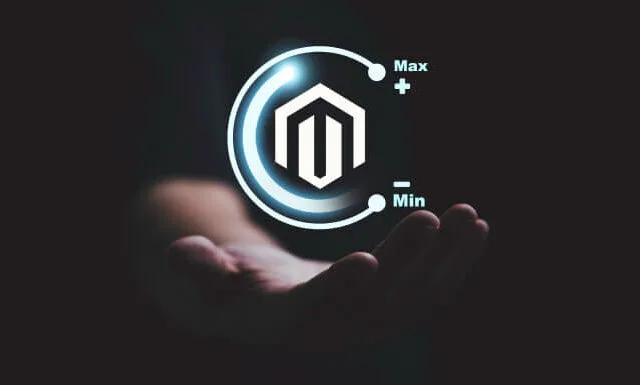Ensuring a pleasant experience for your website visitor is essential for converting them into a customer. Your competitor is only a quick search away, so you need to offer a better alternative. This means that you need to stay up to date and keep your eCommerce website design both easy to use and aesthetically appealing.
This article is aimed to tell you a bit about what is popular in UX for ecommerce. We will focus on the industry trends to help you decide what can make a difference in your ecommerce business. Enterprises can expect the following trends in UX design for eCommerce to grow this year:
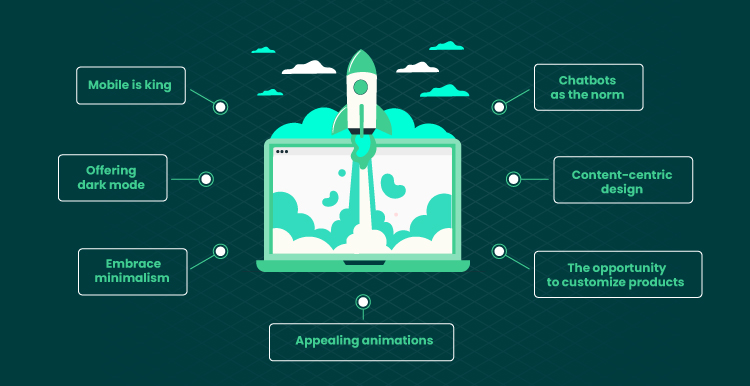
Mobile Is King
It’s well-established that your eCommerce website has to be mobile-friendly. The popularity of mobile shopping among eCommerce customers is undeniable. In 2021, the share of mobile commerce in the global commerce market reached an amazing 73%. What’s more, omnichannel commerce shows 80% higher store visits compared to conventional strategies.
So, ensuring that your eCommerce website is optimized for mobile needs to be a top priority. In fact, we will see an increase in UX for e-Commerce that focuses on mobile. This means that mobile-friendly design elements, such as long scrolling of product pages, will become more common on desktops.
In your strategy, you need to decide if you want to build a single responsive design that adapts to different screens. Or you can build a series of designs tailor-made for the most popular devices and screen sizes. The second option is called adaptive design. If you want to cover a broader audience, you need to consider as many types of browsers as possible. Or at least meet the needs of the most popular ones. You need to understand that mobile design has a different purpose compared to the web. It is more action-focused, customer-centric, and laconic. In mobile, less is more.
Because of the growing popularity of mobile, ecommerce store owners often decide to implement a mobile-first strategy. This is when you build a solution primarily targeted at mobile users and only then build the web version. If you are also interested in this approach as a way to grow the number of potential customers, check out the article.
Offering Dark Mode
Though it has been around for some time, dark themes have seen an upswing in popularity recently. Today, more than 60% of users expect websites to have a dark mode option automatically. Among Apple customers, we see a 50-70% rate of dark mode use. The rush to include dark UI alternatives in apps, social media websites, and, yes, eCommerce stores, followed.
Dark mode reduces battery consumption. There’s a type of screen called OLED. Such screens consume more energy when displaying bright colors. The use of the dark mode is a way to save battery life and consume less electricity. Take YouTube as an example. If your brightness is set at 50%, you will consume 60% less energy with the dark mode on. This is how this function helps save our planet. But these are not all benefits that it offers.
Offering your customers the option to activate a dark mode is not just about aesthetics, but accessibility. Dark themes reduce eye strain. This has the added benefit of making it easier for your visitor to explore your eCommerce site for longer.
Online consumers will be pleased by the flexibility and the convenience you offer. What’s more, ecommerce website designers say that this eCommerce UX design trend will grow even more popular in 2022.
Embrace Minimalism
Minimalism and simplicity are the keywords of UX for e-Commerce in 2022. Let your products be the star, while your UI takes on the supporting role. This means that your eCommerce store design should be functional and crisp. It will use a lot of white space, larger fonts, and simple navigation. This, too, feeds back into the UX design ecommerce trend of striving for increased accessibility.
Minimalism is based on a simple rule. The more choices one is given, the more time it takes for them to choose. You need to get rid of unnecessary elements on the website and keep your design laconic. The product detail page also has to be laconic in a mobile version. This will enable you to engage a larger audience. The thing is, a simple and minimalist design usually appeals to more people compared to a fashionable and sophisticated one.
To make sure that your UX design is minimalistic, follow these tips:
- Display only important content. Do not distract users with slogans or visuals that lead to nowhere. The intention and purpose of each element should be clear and well-communicated.
- Leave free space. You shouldn’t overload your website with annoying effects and elements. Leave a place for free space. This will create an impression of freedom and the lightweight of the website.
- Stick to the flat approach. In the flat type of ecommerce UX design, you keep your color palette, fonts, and effects simple and minimalistic. A great benefit of this approach is that your solution has the potential to become classical and, thus, relevant for years.
- Avoid crowded images. Too much stuff on the pic will never create an impression of a minimalistic UI design for ecommerce. You need to play with design contrast and avoid using crowded product images.
A minimalist design requires every website element to be in perfect harmony, which is no easy feat. Consider hiring a professional UI/UX designer to ensure your eCommerce website is functional and visually appealing.
Appealing Animations
The human eye is attracted to movement. That’s why using animations in your e-Commerce user experience design can really help guide your visitor’s attention. There are three kinds of animation that you will see more of:
- Buttons. A button animation can be as simple as changing the color of the button when someone clicks on it. More advanced alternatives include playing an animation of an item being placed in a cart when someone clicks the buy button. Such effects make shopping online more entertaining and attractive for a user.
- Hovers. Hovers are, unsurprisingly, effects that show up when your cursor hovers over a specific element on a website. These are intended to give your eCommerce customers an idea of what will happen if they click. They are not only helpful, but their interactive nature encourages visitors to stay for longer and keep exploring.
- Cinemagraphs. Images that have small and repeating animations are called cinemagraphs. They typically appear in banners or background images. Cinemagraphs are used to give your otherwise static eCommerce website a little extra spark.
By using animations on your ecommerce website, you get the following benefits:
- Outstand competition. You might have noticed that more and more websites use animations to attract client attention. This can be implemented in customer reviews for their products, telling the company’s story, highlighting preferable actions, etc. Animations help online retailers to stand out from the crowd and make their business memorable.
- Boost SEO. If your UX ecommerce design includes animations, it has a 53% more chance to rank high on Google. Search engines like animations and give preference to online stores that have them. By doing so, Google encourages other store owners to keep improving their sites and making the customer journey more sophisticated.
- High conversion. Conversion rate is one of the most important ecommerce metrics. If you look for ways to increase convention, consider using animations. They attract client attention and make them stay on your website for longer. This, in turn, leads to conversion optimization and drives sales.
Still, there are some things to consider. While moving elements and animations are typically a delight to visitors, don’t forget that for some of them, they will be a hindrance. Offer an accessible option to turn off animations to ensure that everyone enjoys their visit to your eCommerce website.
Chatbots as the Norm
44% of clients say that one of the most important features of an eCommerce website is answering questions in real-time. For a business that is open 24/7 and might be run by less than a handful of people, this is a herculean task. Luckily, chatbots are a great customer service alternative when a human is not available.
Chatbots have grown popular as the artificial intelligence powering them has grown more advanced. According to a study, 74% of B2C and 85% of B2B enterprises use the function of a live chat on their sites. A chatbot is a computer program that helps users navigate via your ecommerce website step-by-step. Thanks to chatbots, users can reach their goals without effort and put the load of figuring out things on a machine. To some extent, chatbots are like substitutes for human consultants who clarify product availability.
Businesses can choose from:
- Command-based chatbots. They are also known as rule-based. Such chatbots perform using the prepared answers. Depending on what question you choose, a chatbot displays a ready-made answer or does a specific action. The answers and actions are prescribed in advance and are fully dependent on the user’s input.
- ML-powered chatbots. These chatbots have the ability to learn. They learn from the customer experience and are more flexible and advanced. Such chatbots provide a more human-like response. They can increase customer satisfaction and meet demands that go beyond the prepared scripts.
Chatbots are capable of answering your eCommerce customers’ questions instead of a customer service associate and assisting in product search. Furthermore, they can analyze the individual user’s behavior on the website to provide even better customer support. Considering this, it’s hardly surprising that it is one of this year’s most prominent trends in e-Commerce app design.
Content-Centric Design
Your website should be not only promotional but also informative. There are many advantages to providing content such as blog articles on your website. They include but are not limited to:
- Attracting attention to your products;
- Explaining the advantages of your products;
- Providing helpful tips and suggestions.
When it comes to UX design for eCommerce, 2022 will see an emphasis on content as promotional material. This presumes the optimization of experience for your eCommerce customers and ensures an attractive product presentation. There are some characteristics of this trend:
- Balance between content and space. Daily, we deal with a big volume of user-generated content. For us, it seems that the more, the better. In ecommerce website development, it works the other way. You need to find the happy medium between whitespace and text so that your users can take a minute before moving to the next section. As for the volume of content needed to reach your goals, it depends on your niche and the services you provide. Analyze the top-ranking competitors to see how much content they produce to reach the best results.
- Getting rid of unnecessary clutters. Analyze your content from the viewpoint of clutters. Remove cluttering if there is too much of it. Leave only meaningful content to drive a goal-focused user experience.
- Sticking to a particular order. You need to hire a UX expert to understand how site visitors perceive and interact with your online store. Following conventional truths of user experience will help you make sure that your client feels in a way they’re supposed to when they are on your site. For example, following conventional truths include placing a search bar or a search field on the upper right side and the home button on the upper left side of a page.
What is better than reading an article about a product you are interested in than a link directly to that product? The answer is, being able to put an item in your cart without having to leave the blog article itself. Today, this can be done via images as well. This content-centric design provides your customer with a smooth and effortless online shopping experience.
The Opportunity to Customize Products
The ecommerce user experience will be unforgettable and pleasant if you offer the function of product customization. This is when users can customize the chosen products and check how items will look in a specific color, size, shape, design, and so on. This approach adds to personalization and makes online customers feel special about the services you give them.
But implementing such a function can be a time-consuming and difficult task. It will take time for you to prepare for customization. A good idea is to hire a UX professional who will bring your ideas to life and offer plenty of intuitive features to your audience.
Benefits from UX for e-Commerce
In this article, we went through key ecommerce trends in UX and highlighted the benefits one gets from following these trends. As you see, a great user experience is a key to turning first-time visitors into return customers. This is true not only for a brick-and-mortar store but also for online businesses. By staying on top of UX design trends, you can turn your e-Commerce website into a delightful experience for anyone interested in your product.
If you need help polishing your e-Commerce system design, don’t hesitate to reach out. We’ll be happy to help your website shine!

Our Engineers
Can Help
Are you ready to discover all benefits of running a business in the digital era?

Our Engineers
Can Help
Are you ready to discover all benefits of running a business in the digital era?
